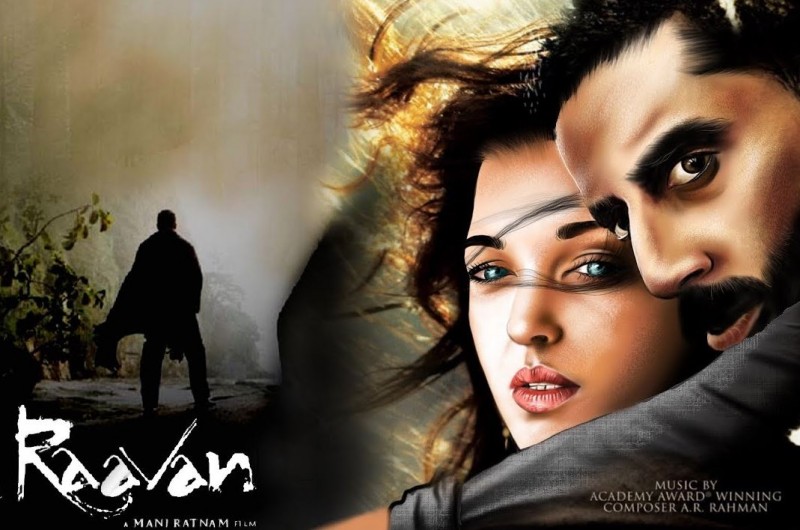
The ability of Indian cinema to retell and adapt classic tales, myths, and legends has long been recognised. A notable example of this cinematic tradition is "Raavan," a 2010 Bollywood film directed by Mani Ratnam. The film bears similarities to the life of revolutionary leader Kobad Ghandy, even though it was mainly inspired by the ancient Indian epic Ramayana. Through the combination of historical and mythological elements, a unique narrative is created that enthrals audiences with its depth and complexity.
The primary storyline of "Raavan" is primarily derived from the Ramayana, one of India's two great Sanskrit epics (the other being the Mahabharata). The tale of Lord Rama, his spouse Sita, and the demon king Ravana is recounted in the Ramayana. The kidnapping of Sita by Ravana is one of the main stories in the Ramayana, and it serves as the main inspiration for the movie.
In the film "Raavan," the characters are recast in a modern context, with Dev (Aishwarya Rai Bachchan) serving as the contemporary counterpart of Ram, Ragini (Aishwarya Rai Bachchan) serving as the modern-day Sita, and Beera (Vikram) serving as the symbolic Ravana. Mirroring the epic story of Rama's quest to free Sita from Ravana's captivity, the story revolves around Beera's abduction of Ragini and Dev's unwavering pursuit to save his wife.
"Raavan" explores the murky areas of morality and the complexity of human nature, departing from the traditional Ramayana storytelling. Though he represents the demon king Ravana, Beera is not wholly evil, just as Dev, the contemporary Rama, is not wholly good. The movie challenges the conventional black-and-white depiction of good versus evil by exploring the shades of grey that exist in human characters and relationships.
The antagonist of the movie, Beera, is shown to be a multifaceted individual with a sincere grudge against the government that drove him to resort to violence. His conviction that he is defending justice and his people's rights makes him more relatable to the audience and helps them empathise with him. In addition to giving the story more depth, this nuanced representation of Beera poses intriguing queries about the nature of good and evil.
Though he has shortcomings, Dev, on the other hand, embodies the ideal hero. He questions the boundaries of what is appropriate in the pursuit of justice and love as his fixation with saving his wife blurs the lines between obligation and selfishness. With a more sympathetic and approachable lead character, the movie questions conventional ideas of heroism and virtue.
"Raavan" borrows elements from the life of Kobad Ghandy, a well-known figure in Indian revolutionary movements, in addition to the Ramayana. The background to Beera's story is provided by Ghandy's life and actions as a Naxalite leader. Social injustice, exploitation, and rebellion are all subtly woven into the storyline of the movie.
Ghandy's transition from an affluent upbringing to becoming a radical revolutionary is comparable to Beera's shift from a peaceful tribal chief to a notorious outlaw. Similar to Ghandy's revolutionary fervour, Beera's actions are motivated by his belief in the rights of the oppressed and his determination to resist exploitation.
The film gains a layer of socio-political commentary from the relationship between Beera and Kobad Ghandy, which highlights the challenges faced by marginalised communities and the moral quandaries encountered by those who opt for armed resistance against oppressive systems.
"Raavan" is a cinematic masterpiece that deftly combines real-life experiences of revolutionary leader Kobad Ghandy with elements from the Ramayana. The end product is a movie that questions conventional ideas about morality, heroism, and good versus evil. "Raavan" invites viewers to consider the moral quandaries that confront people and the complex nature of humanity through its nuanced storytelling and layered cast of characters.
The film goes beyond its basic plot and becomes a potent commentary on the complexity of human existence by fusing mythology with current social and political issues. The film "Raavan" asks viewers to consider the indistinct boundaries between good and evil, courage and villainy, and the decisions people make in the name of justice and love. By doing this, it upholds the long history of Indian cinema, which has always been a mash-up of contemporary reality and folklore.
Why Anurag Kashyap's 'Ghoomketu' is a Testament to Shifting Film Industry Dynamics
Vicky Kaushal's Cinematic Debut in 'Luv Shuv Tey Chicken Khurana'
This lake is famous by the name of Madhuri Dixit! I will keep looking at the beauty